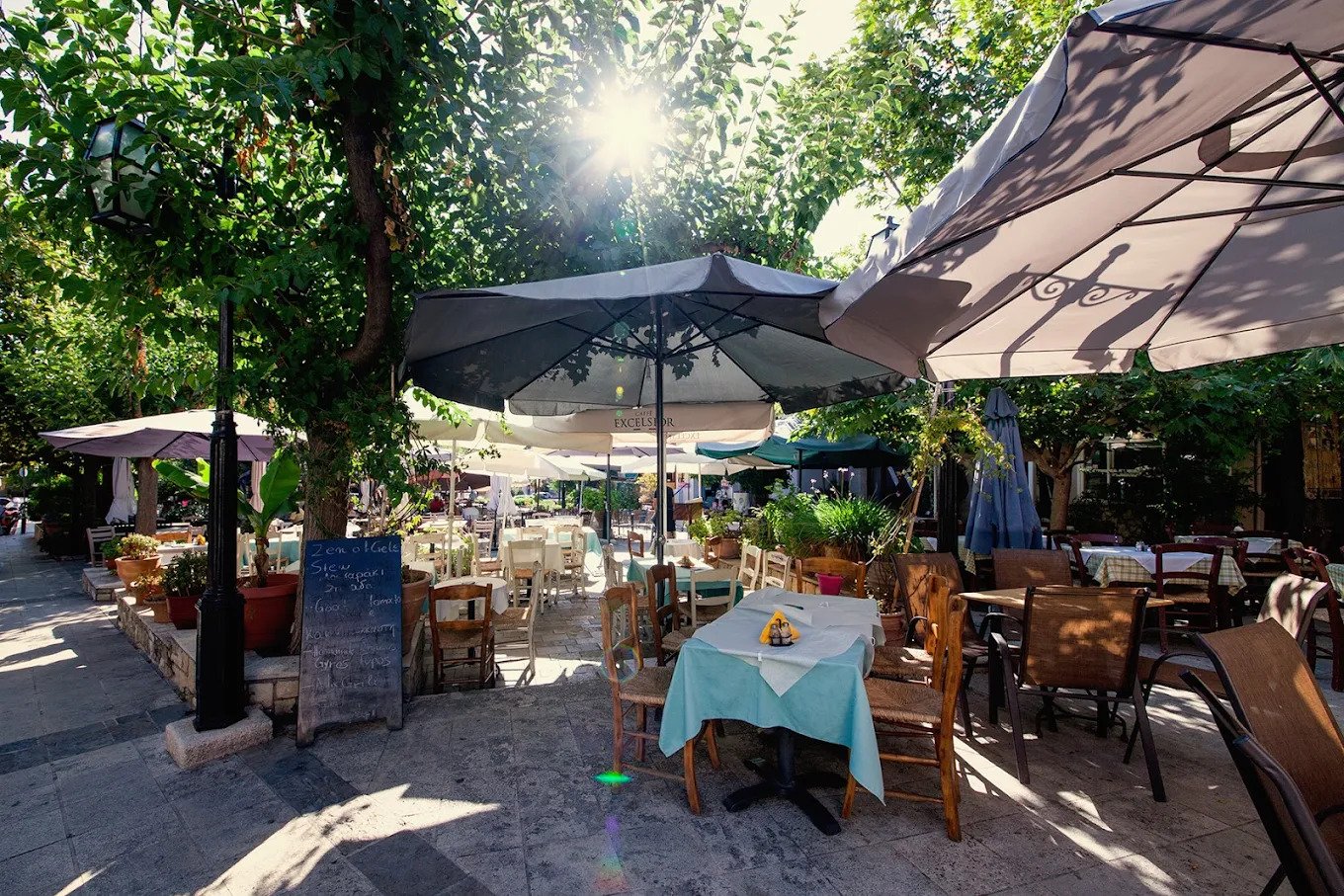You’re about to discover Crete’s most remarkable culinary treasures nestled in its mountain villages. While tourists flock to the coastlines, these elevated havens preserve authentic cooking traditions that have evolved over centuries. From Theriso’s legendary slow-roasted lamb to Anogeia’s artisanal cheeses, these eight destinations offer more than just spectacular views—they provide an immersive feast for all your senses.
Each village has perfected its own specialties, combining ancient techniques with local ingredients you won’t find in tourist hotspots. Whether you’re a seasoned foodie or simply curious about authentic Cretan cuisine, these mountaintop communities will transform your understanding of Mediterranean cooking through dishes that tell the story of this remarkable island. Let’s dive in!
1. Theriso (Chania Region)
Nestled in the rugged Chania mountains, Theriso welcomes food lovers with the intoxicating aroma of antikristo wafting through its stone-paved streets.
You’ll find exceptional value at traditional tavernas like Limeri and Cheimōnanthós, where €15 gets you a feast fit for Zeus himself. Don’t miss the signature antikristo – lamb or goat slow-roasted on wooden stakes around an open fire – or the creamy staka me avga for breakfast. This centuries-old shepherds’ technique infuses the meat with smoky, savory flavors and an irresistible crispy crust that you’ll be dreaming about long after your visit.
Fresh kalitsounia and sfakianes pites, lovingly made by village yiayiades (grandmothers), pair perfectly with house wine from local vineyards. The open-fire cooking methods give every dish a rustic flavor that city restaurants simply can’t replicate. Seasonal salads featuring wild mountain greens (horta), tomatoes, and local cheese are often picked just hours before reaching your table.
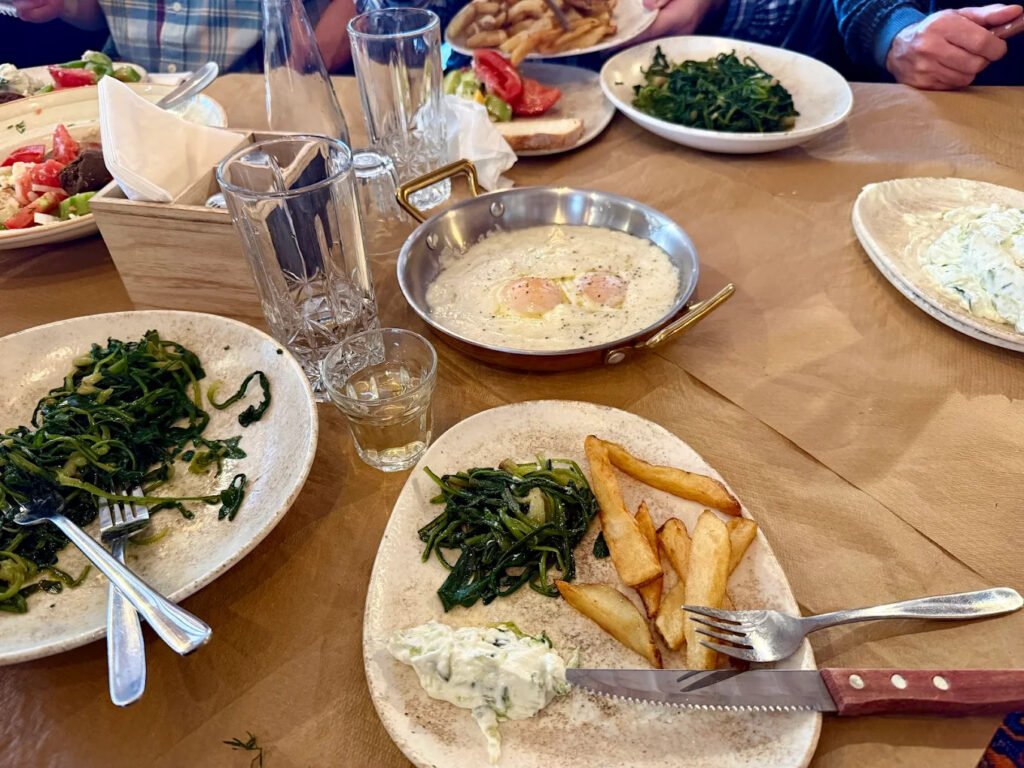
When the staff encourages you to eat those perfectly grilled lamb chops with your hands, go for it – it’s all part of the authentic experience! On Sundays, join local families as they spill onto shaded terraces, sharing multi-course meals that stretch deliciously into the afternoon.
The portions are famously generous, so come hungry and be prepared to linger – meals here are about connection, not just consumption.
Local Tip: After satisfying your appetite, delve into Cretan history at the Museum of the Theriso Revolution. This beautifully restored building, once the headquarters for Eleftherios Venizelos and his fellow revolutionaries during the 1905 uprising, now houses a modern exhibition with authentic artifacts, archival documents, the original revolution flag, 19th-century weaponry, and traditional Cretan attire. It’s the perfect way to understand the island’s struggle for autonomy while digesting your delicious meal.
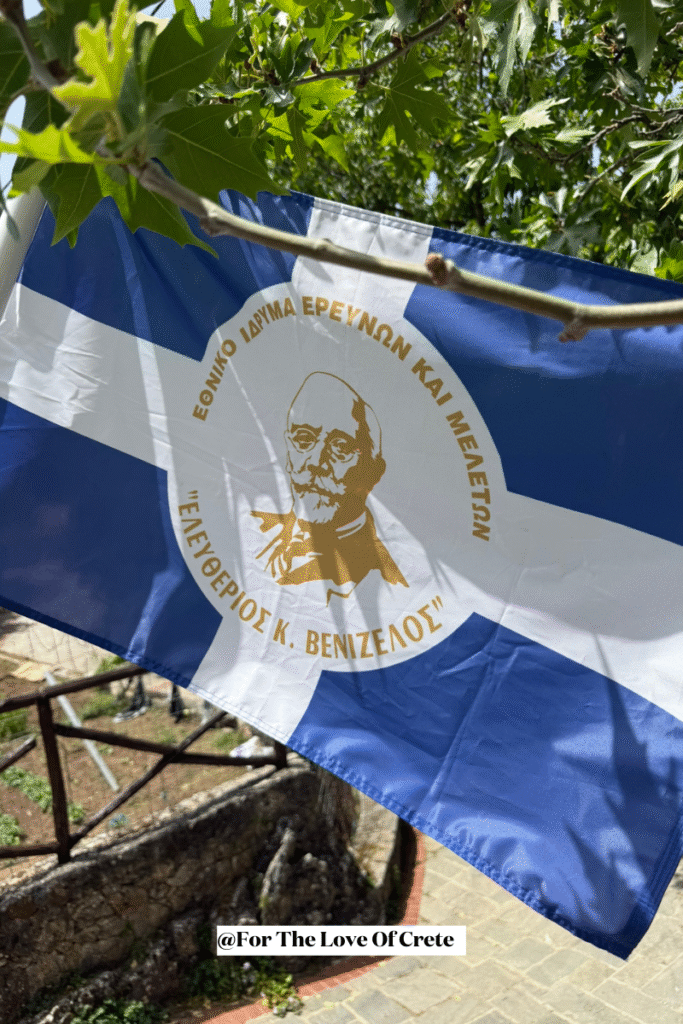
2. Milia (Chania Region)
The next destination on our culinary journey takes us to Milia’s enchanting eco-village, where electricity takes a back seat to candlelight and farm-to-table isn’t just a buzzword—it’s a way of life.
At the heart of this restored mountain retreat, the celebrated Milia Mountain Restaurant crafts daily-changing menus that’ll make your taste buds dance. Everything is organic, seasonal, and mostly harvested from their own gardens and farms. The rustic, remote setting among ancient olive groves and stone houses creates a dining atmosphere that feels like stepping back in time.
You won’t find ordinary taverna fare here. Instead, prepare for a gastronomic journey featuring:
- Wood-fired delicacies like roasted baby goat and zucchini pot pie, all seasoned with foraged mountain herbs
- House-made breads served with local honey and fresh goat cheese from their own animals
- Creative desserts that blend tradition with innovation, such as carob tart, and savory dishes like rabbit with mushrooms.

While prices might be higher than your typical village eatery and portions sometimes smaller, the combination of spectacular mountain views, candlelit ambiance, and exceptional organic cuisine makes every euro worthwhile. Many guests single out the staka butter cream as a must-try—it’s a rich local specialty you’ll rarely find executed this authentically elsewhere.
The eco-conscious ethos extends beyond the kitchen. This off-grid retreat embraces sustainability in every aspect, creating an experience that nourishes both body and soul. No wonder why Milia has earned its reputation as more than just a restaurant, but as a holistic celebration of Cretan heritage.
Local Tip: After your meal, explore the network of hiking trails that wind through Milia’s ancient olive groves. These peaceful paths offer stunning mountain views and a chance to walk off your feast while spotting local herbs and plants that might have just appeared on your plate.
3. Drakona (Chania Region)
Deep in the White Mountains, where culinary traditions remain untouched by time, Drakona beckons food lovers with its soul-stirring aromas of wood-fired cooking and herb-infused specialties.
You’ll find your culinary heart at Ntounias taverna, where every dish tells a story of the land. Watch as your meal comes together in clay pots and wood-fired ovens, using ingredients from the Stelios’ farm and foraged herbs from nearby slopes. Don’t expect a printed menu – instead, you’re invited to see what’s bubbling in the pots.
The farm-to-table ethos here isn’t a marketing strategy; it’s simply how things have always been done. Stelios, the passionate owner and chef, cultivates most ingredients in his organic gardens or sources them from neighboring farms. His wife Emi completes this warm family atmosphere, making you feel instantly at home in their mountain haven.
Whether it’s tsigariasto (slow-cooked goat), lamb baked in parchment, or stuffed vegetables with wild greens, each dish showcases the village’s no-waste philosophy and respect for traditional methods. The seasonal cheese pies drizzled with thyme honey and fresh feta served with wild oregano offer perfect bites between heartier plates.
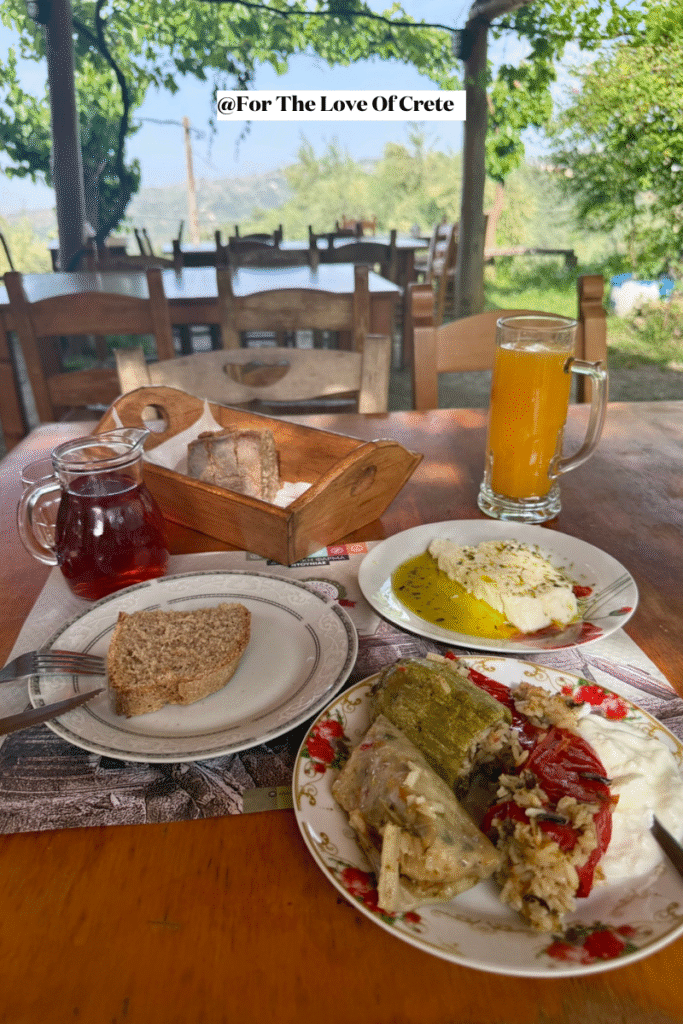
Let Stelios and his staff guide your culinary adventure. As you dine outdoors surrounded by mountain views, you’ll understand why this remote taverna has earned international acclaim. The unhurried pace here embodies the true spirit of “siga siga” (slowly slowly) – a reminder that the best flavors, like the best experiences, can’t be rushed. As Stelios himself pointed out to me, traditional Cretan cuisine isn’t about gyros or souvlaki, but these slow-cooked, from-scratch meals that honor generations of mountain cooking traditions.
Local Tip: Stay a few nights in one of the two apartments that Stelios and Emi rent beside the taverna for an immersive experience. Fall asleep to the symphony of mountain sounds and wake to breathtaking views. I spent several magical nights here myself and was enchanted by the peaceful isolation. This deeper connection to the land and rhythm of mountain life is what makes a visit to Drakona truly unforgettable. Personally, it was a highlight of one of my trips to Crete, and I can’t recommend it enough for those who appreciate being surrounded by nothing but pristine nature and authentic hospitality.
4. Krasi (Heraklion Region)
Moving east from Chania’s mountain treasures, you’ll discover Krasi’s treasured culinary landscape. The village’s three outstanding tavernas – Stefanis, Krassopsychia, and Kares – each offer their own interpretation of authentic mountain cuisine, from handmade sioufichta pasta to slow-cooked lamb dishes such as kleftiko, and, in some cases, antikristo.
The setting alone makes dining in Krasi unforgettable. Imagine enjoying your meal in the shaded village square under the sprawling branches of an ancient plane tree, estimated to be over 2,000 years old – a living monument that creates a magical atmosphere for leisurely lunches and dinners. This natural dining room becomes particularly enchanting in summer, when the dappled sunlight filters through the leaves.
You’ll want to experience these local favorites:
- Traditional meze platters featuring dakos, wild greens, and the region’s celebrated graviera cheese
- Slow-cooked lamb dishes like kleftiko, perfectly paired with pure spring water straight from the mountain
- If you’re lucky, you might find tzoulamas, a unique festive pie filled with rice, raisins, nuts, and spices, on the menu.
The village embodies Crete’s slow food traditions in every sense. Don’t be surprised if your lunch stretches into the afternoon as you sample the tavernas’ house wines and chat with locals.
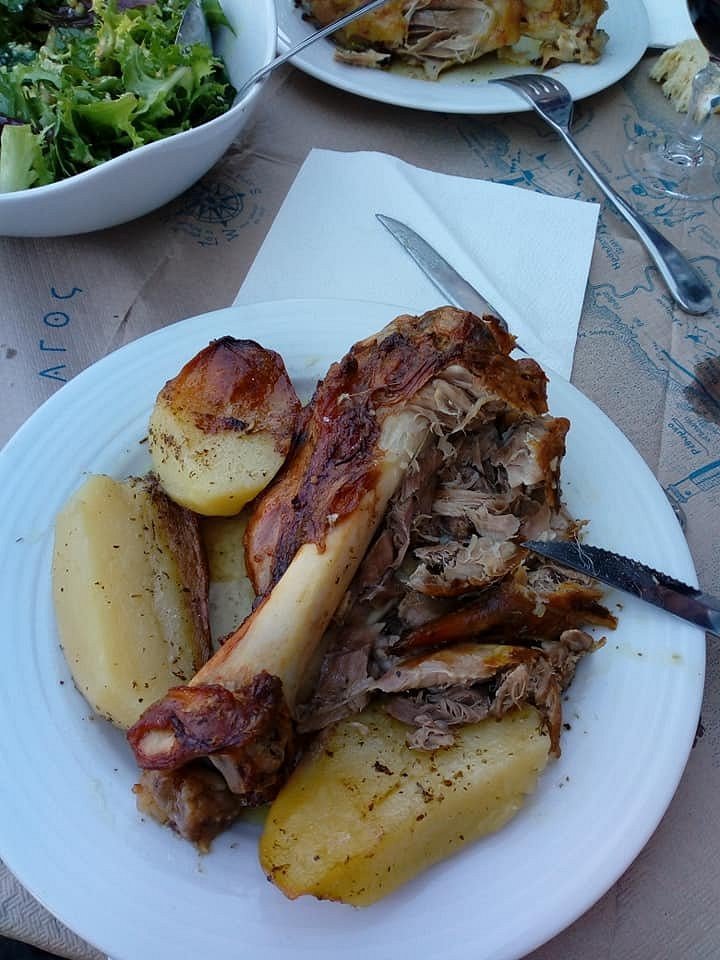
During autumn and late summer, you might be lucky enough to catch a panigiri (local festival), where the village’s food culture truly comes alive through special dishes and communal feasts. For those who prefer plant-based options, wild greens, bean dishes, and vegetable pies offer flavorful alternatives – just ask your server about the day’s specials.
If you’re visiting on weekends or holidays, arrive early or make reservations, as Krasi’s reputation attracts food lovers from across the island.
Local Tip: After your meal, walk a few minutes to the legendary Krasi Spring for a refreshing drink of the mountain spring water that locals proudly claim is among the purest in Crete. This natural spring not only provides the water served at local tavernas but has been revered since ancient times for its quality.
5. Anogeia (Rethymno Region)
Perched high in the Psiloritis mountains, legendary Anogeia captivates food lovers with its culinary treasures.
For an authentic dining experience, head to Arodamos. This family-run taverna has earned its stellar reputation through exceptional mountain dishes and genuine hospitality. The wood-fired lamb and handmade skioufikta pasta topped with local anthotyro cheese are standouts on their menu.
During my visit, I was treated to the freshest soft mizithra I’ve ever tasted, drizzled with local honey and made by the grandfather in the family. His son runs the taverna while his mother helps in the kitchen and serves the guests, creating a true family operation. When the grandfather himself came to ask how I liked the cheese, it added such a personal touch to my early May visit. I was lucky enough to sit right by the window, enjoying breathtaking views of Mount Psiloritis with every bite.

The meats here are also exceptional, sourced from herds that graze on wild mountain herbs across the Psiloritis slopes. The signature antikristo – lamb slow-roasted vertically around an open fire – offers a smoky, succulent experience you won’t find prepared quite the same way anywhere else in Crete.
After your main course, indulge in galaktoboureko at a village square café, such as Michalos Café or I Platía tou Syntágmatos (also known as Kafeníon Skoulá), where you’re likely to be serenaded by spontaneous bursts of traditional music. At these traditional kafenia, you can see locals exchange stories over Greek coffee and house-made raki, often sharing simple but delicious home-cooked dishes that showcase Anogeia’s everyday culinary traditions.
The social aspect of dining here is essential to the experience. Don’t be surprised if your dinner includes impromptu lyra playing or locals sharing tales of the village’s storied history of resistance. When ordering, ask for “what the family is eating today” to discover true local specialties beyond the sometimes extensive menus.
Local Tip: After your meal, explore Anogeia’s rich cultural heritage. Visit the Nikos Xilouris Museum, dedicated to the legendary singer known as “the Archangel of Crete.” Then discover the village’s famous weaving tradition – I had the privilege of meeting Aristea Xilouris, a remarkable 90-year-old artisan who has been weaving since she was 13 and once ran Crete’s largest weaving business. These cultural experiences perfectly complement your culinary adventure, showcasing how deeply food, music, and craftsmanship are intertwined in this extraordinary mountain community.
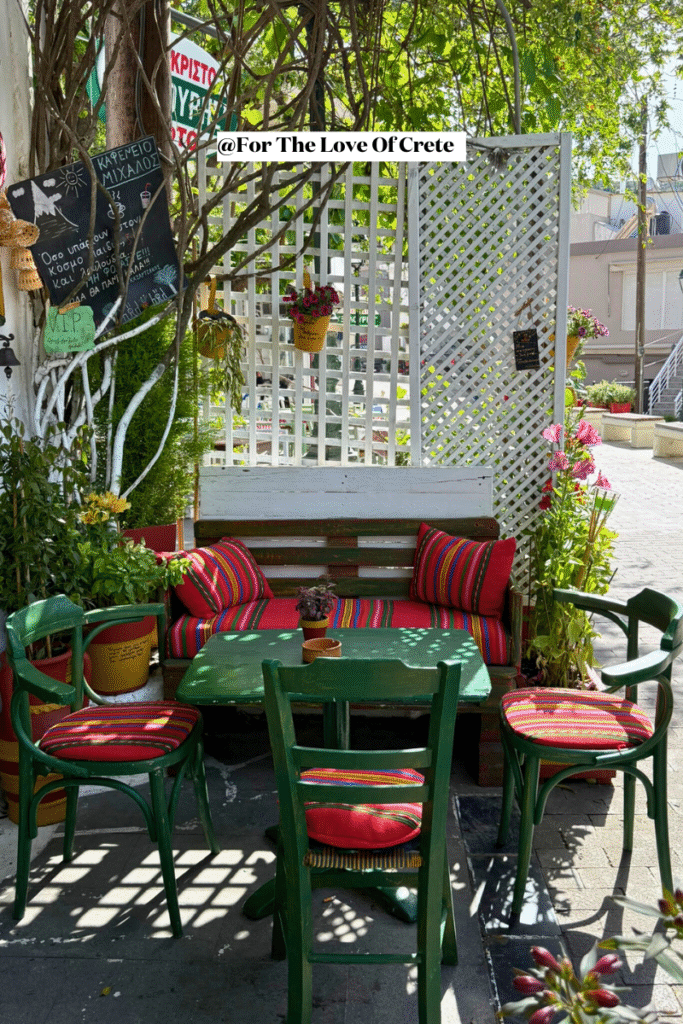
6. Pefki (Lasithi Region)
Nestled among fragrant pine-covered hills above the Libyan Sea, Pefki offers a taste of authentic Cretan mountain cuisine you won’t find in tourist hotspots.
Dine at a local taverna such as Taverna Piperia, where you’ll savor hearty dishes made from local meats, wild greens, and vegetables grown in the village gardens. Pefki’s history as a seasonal settlement for farmers cultivating grapes, olives, and figs still flavors the village’s cuisine today.
Don’t miss trying sofegada, a hearty summer vegetable stew that showcases the region’s wild greens. Lasithi is renowned for its abundant use of these nutritious mountain herbs, which appear in everything from salads to savory pies.
Local cheeses, especially the creamy, slightly tangy xygalo Sitias PDO, feature prominently in dishes throughout the village. Try it spread on rusks or as part of a traditional Cretan salad for a true taste of Lasithi’s dairy tradition. Finish your meal with homemade xerotigana (honey-drenched fried pastry strips) or sweet cheese pastries for a perfect ending to your mountain culinary adventure.
Local Tip: After dining, take a short walk to one of the village’s panoramic viewpoints where you can see both mountains and sea – a rare perspective that explains Pefki’s unique culinary identity.
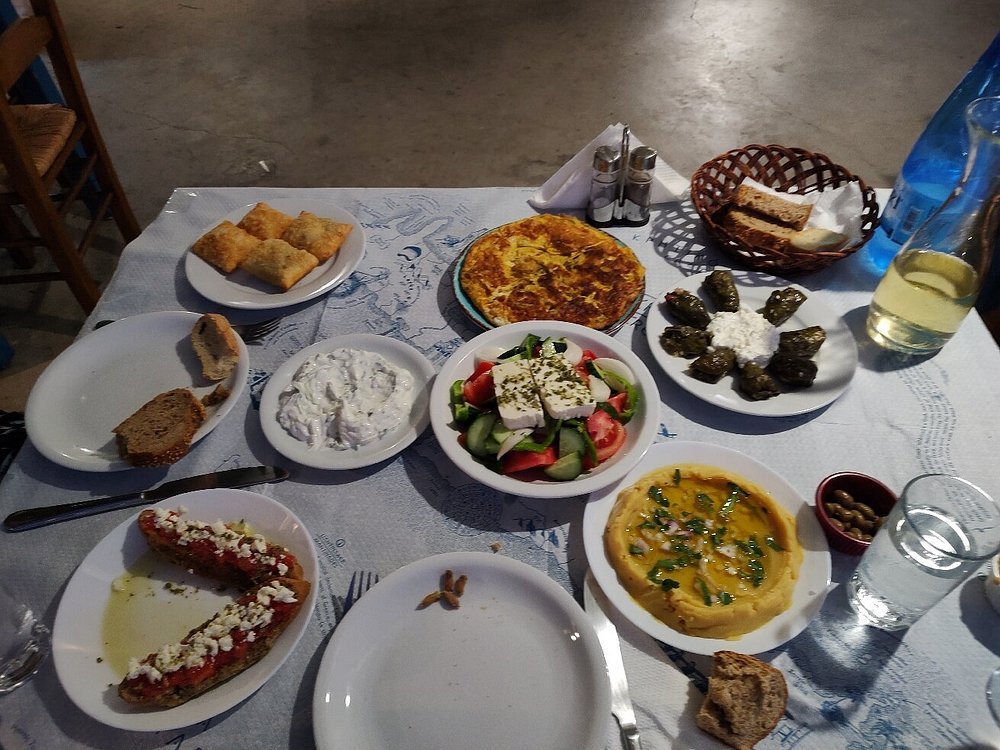
7. Kritsa (Lasithi Region)
While many travelers flock to Crete’s coastal towns, you’ll find the heart of Cretan cuisine beating strongest in Kritsa, an enchanting mountain village that’s earned its reputation as the crown jewel of Lasithi’s culinary scene.
You won’t want to miss Taverna Aristidis and Elixir, where you’ll savor authentic dishes like tsigariasto (slow-cooked lamb) and kalitsounia (cheese pies) made with local ingredients. The village’s signature dakos-topped with grated tomato and xygalo Sitia cheese-showcases the region’s award-winning Kritsa olive oil, produced from the thousands of olive trees that surround the village.
For a true taste of tradition, try the staka me ayga (eggs in creamy butter sauce) or hand-rolled skioufichta pasta. These dishes highlight Kritsa’s celebrated dairy products, especially the tangy xygalo Sitia PDO cheese that appears in various forms throughout local menus.
The old-world charm of cobblestone streets and traditional architecture enhances every meal here. As you dine on a taverna terrace surrounded by mountain views and the aroma of wild herbs, you’ll understand why food tastes better in this setting. The atmosphere alone is worth the journey up the winding mountain road.
Don’t leave without visiting the Kritsa Women’s Cooperative, where local women preserve traditional recipes through homemade pastries, breads, and preserves. These spots offer a unique opportunity to taste authentic Cretan home cooking and purchase edible souvenirs that support the community.
Don’t rush your meals. Settle in, surrounded by mountain views and the aroma of fresh bread and grilled meats, and experience dining the Cretan way.
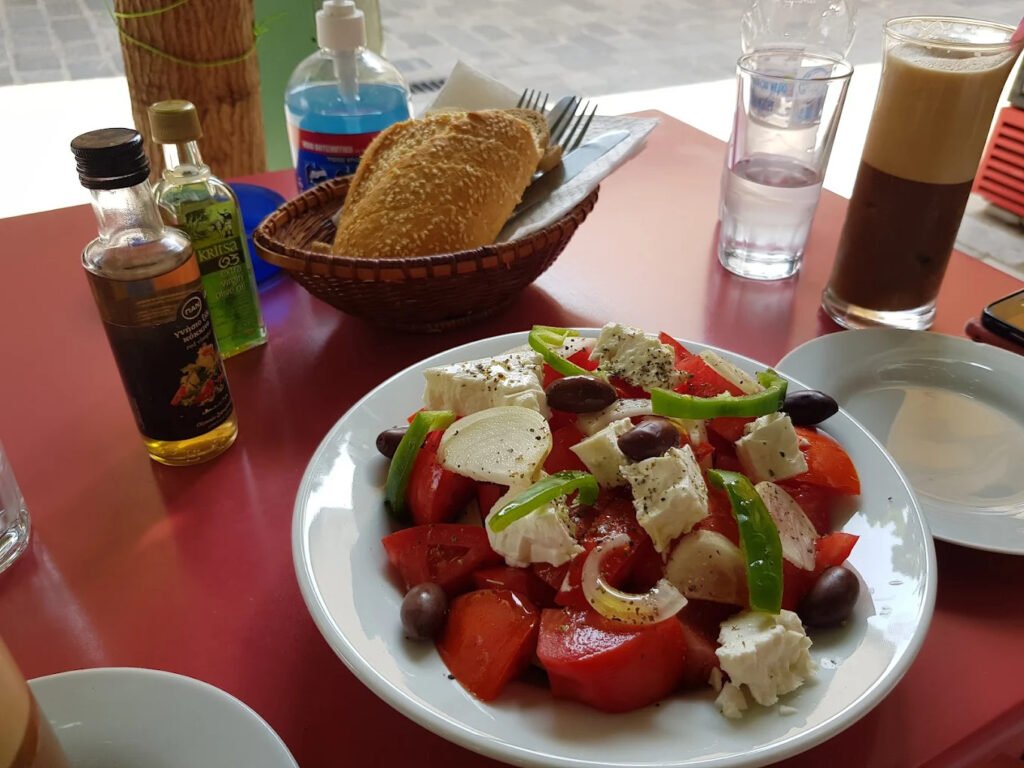
At Taverna Aristidis in Kritsa, a classic Greek salad with fresh tomatoes, creamy feta, olives, and local olive oil is the perfect start to an authentic Cretan meal. Photo Credit: Taverna Aristidis.
Local Tip: After your meal, take a short walk to the Byzantine church of Panagia Kera, located 1 km from the village center. This 13th-century church houses some of Crete’s most important and best-preserved Byzantine frescoes, making it a highlight for art and history lovers. The 10-minute stroll helps digest your feast while connecting you to Kritsa’s rich cultural heritage. If you’re visiting between late April and early May, the path to the church is lined with wildflowers that create a spectacular natural carpet.
8. Archanes (Heraklion Region)
From Kritsa’s rustic charm, let’s head to the enchanting village of Archanes, where ancient Minoan heritage meets modern culinary excellence. You’ll discover a vibrant foodie paradise where traditional tavernas line the lively village square, serving up authentic Cretan dishes that’ll make your taste buds dance.
Start your culinary adventure at Zen of Crete, where family recipes shine through organic, locally-sourced ingredients from small-scale producers. The bustling central square creates the perfect backdrop for experiencing their authentic Cretan cuisine.
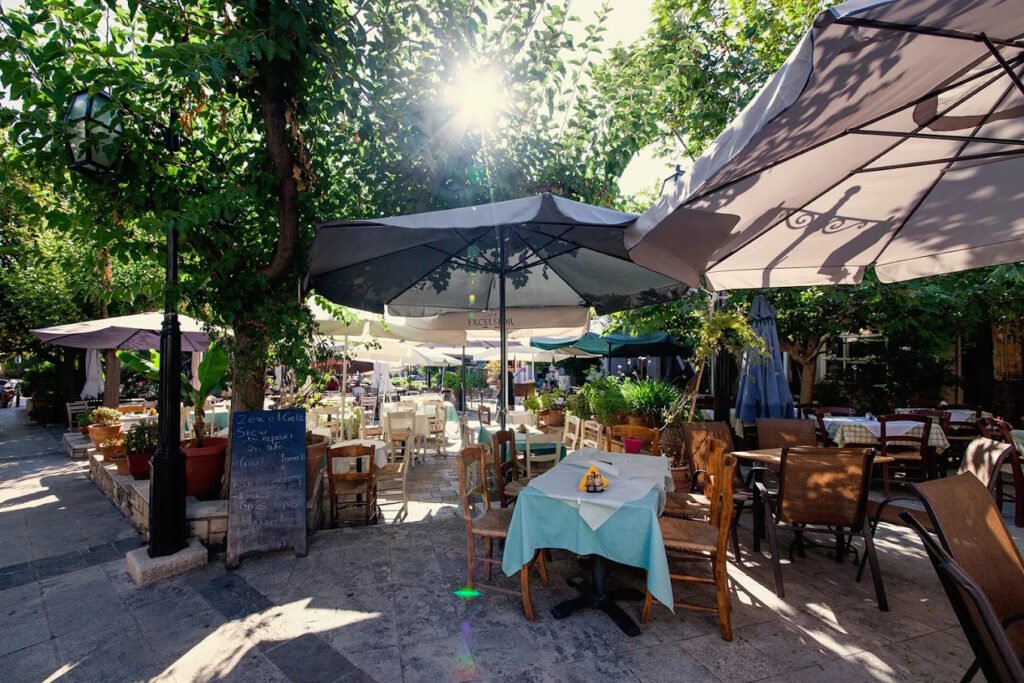
Don’t miss Bakaliko Crete’s innovative dishes in their charming garden setting. Their creative approach to local ingredients offers a fresh perspective on Cretan flavors while honoring time-honored techniques.
Sample the village’s specialties: chochlioi boubouristoi (pan-fried snails), tender stewed goat, and, if you’re lucky, xydato sausage. The exceptional quality of ingredients is immediately apparent – everything from the olive oil to the seasonal vegetables speaks of Archanes’ rich agricultural heritage.
The house wines in Archanes are particularly special, as this village sits in the heart of Crete’s wine country, with vineyards dating back to Minoan times.
Unlike many seasonal destinations, several of Archanes’ tavernas remain open year-round, though it’s wise to check hours if visiting in winter. This accessibility makes it a perfect day trip from Heraklion, just 20 minutes away – offering a quieter, more authentic alternative to city dining.
Local Tip: Combine your culinary exploration with a morning hike up nearby Mt. Giouchtas for spectacular panoramic views. The moderate trail takes about 2–3 hours round trip and will work up the perfect appetite for a leisurely lunch in the village square. For wine enthusiasts, several local wineries welcome visitors for tastings, where you can learn about Crete’s indigenous grape varieties while sampling wines that rarely make it beyond the island’s shores. For history lovers, the Archaeological Museum of Archanes and the Minoan site of Anemospilia are well worth a visit.
Conclusion
As you’ve discovered, Crete’s mountain villages offer an unparalleled feast for adventurous food lovers. Whether you’re savoring Theriso’s slow-roasted lamb, exploring Milia’s organic delights, or sharing raki and seafood in Kritsa, each village presents its own culinary masterpiece. Don’t forget to chat with taverna owners, ask about the day’s specials, and embrace the unhurried pace of mountain dining. Many villages also offer homemade products like olive oil, honey, and wine to take home – edible souvenirs that let the flavors of your journey linger long after you’ve returned. Don’t be shy about asking for recommendations – after all, the true spirit of Cretan hospitality is found not just in what’s on your plate, but in the stories and connections that season every unforgettable meal.
Further Reading:
19 Traditional Cretan Tavernas in Chania Region That You Must Try

